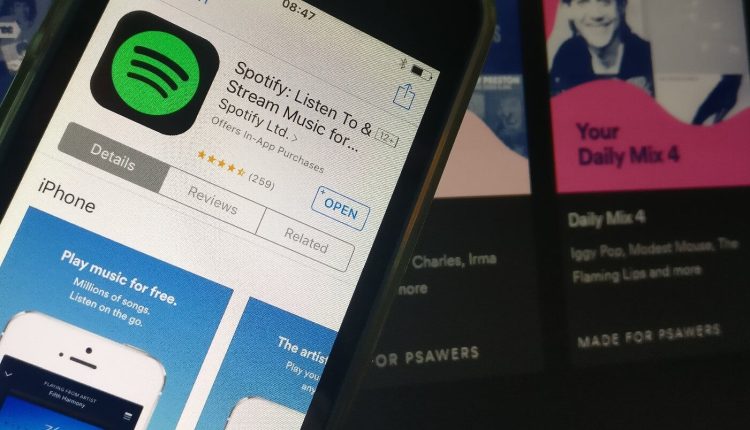Spotify’s big day is getting closer, as the music-streaming giant kicks off its public listing push with its official Investor Day presentation later today.
The event is scheduled to be livestreamed from around 10 a.m. (Pacific), but ahead of the big broadcast the company has posted a handful of promotional videos outlining various aspects of its business, including where it has come from, its business model, and a product overview. This is typical for any company that’s about to go public — after all, it wants to generate interest in its shares. But included in Spotify’s library of videos is a tidbit outlining five reasons why it’s choosing to list directly on the New York Stock Exchange (NYSE), as opposed to following a traditional IPO route.
The company has previously alluded to the logic behind its decision — it wants to avoid giving any kind of preferential treatment to Wall Street and instead rely on ordinary investors to back its growth. In a sense, it’s pushing to democratize its shareholding in much the same way it’s aiming to democratize music. Plus, it wants people to know that it doesn’t need to raise more cash — it’s doing just fine.
While Spotify’s reasons for skipping an IPO may not be earth-shattering, it’s still interesting to see the thought process behind that decision.
June 5th: The AI Audit in NYC
Join us next week in NYC to engage with top executive leaders, delving into strategies for auditing AI models to ensure fairness, optimal performance, and ethical compliance across diverse organizations. Secure your attendance for this exclusive invite-only event.
1. List without selling shares
“Spotify is not selling any shares, there is no underwritten offering, and there are no underwriters,” the company said. “There’s no reason to dilute our existing shareholders to raise money we don’t need.”
Indeed, Spotify stated that it’s well capitalized, has positive free cash flow, and has zero debt once it exchanges its convertible notes. These notes were the result of a $1 billion debt raise back in March, 2016 that stipulated investors could convert the debt to stock during a public offering at a 20 percent discount. The longer Spotify waited to go public, the larger that discount and interest grew. This is one big reason Spotify is going public now — it has shareholders to appease.
2. Liquidity for shareholders
“As a publicly listed company, Spotify’s private investors and employee shareholders will be able to sell their shares on the New York Stock Exchange, instead of the private market,” the company said.
Spotify is around 10 years old, and a lot of people have supported it along the way to becoming the world’s leading music-streaming platform. The public listing allows Spotify to repay those backers by giving them a much bigger platform on which to sell their shares — and eliminating some of the restrictions enforced by the usual IPO conduit.
3. Equal access to all buyers and sellers
“Any investor who wants to buy Spotify shares will be able to do so on the exchange,” the company said. “There’s no underwriting syndicate, there’s no limited float, no IPO allocations, and no preferential treatment for any investor. Unlike a traditional IPO, it’s a completely level playing field.”
Spotify is keen to paint itself as a good guy looking after the interests of its backers — existing and future. Shareholders and employees aren’t subjected to “underwriter-mandated lockups,” which basically means they can sell their shares from the get-go, without waiting for a contractually agreed period of time to elapse. “Supply will not be unnaturally constrained,” Spotify added, “and price will not be distorted by market stabilization activities or short-sellers gaming a lockup expiration.”
4. Radical transparency
“Spotify has filed a Form F-1 with the SEC that provides full financial disclosure, just like we would’ve done with a traditional IPO,” the company said. “Instead of a traditional roadshow process focusing on a relatively small group of U.S.-based institutional investors, we are hosting an Investor Day presentation which will be streamed live and viewable around the world.”
Again, Spotify is painting itself as a fair company that doesn’t give preferential treatment to a certain type of investor. In other words, it’s not hanging with the financial elites — it wants everyone to be part of the conversation.
5. Market-driven price discovery
“We believe that market forces should drive price discovery, like they do for the majority of publicly traded stocks — where supply and demand find equilibrium for a transparent process, without the friction created by traditional lockups and a limited float,” Spotify said. “It is our belief that the wisdom of crowds trumps expert intervention and that the market price for Spotify will find equilibrium through natural market forces.”
Spotify shares have traded on secondary markets for a while already, and the company believes this will prove to be a good guide for its public market pricing — though we can perhaps expect a little more volatility than we might see with a traditional IPO.
“We have a belief that the stock price will take care of itself if we build a great company,” Spotify added.
What now?
Spotify filed for its direct NYSE listing last month, and the official Investor Day presentation today can be viewed live here. We could see further marketing initiatives over the coming weeks, with Spotify reportedly aiming to kick off its public listing in the week beginning April 2.

